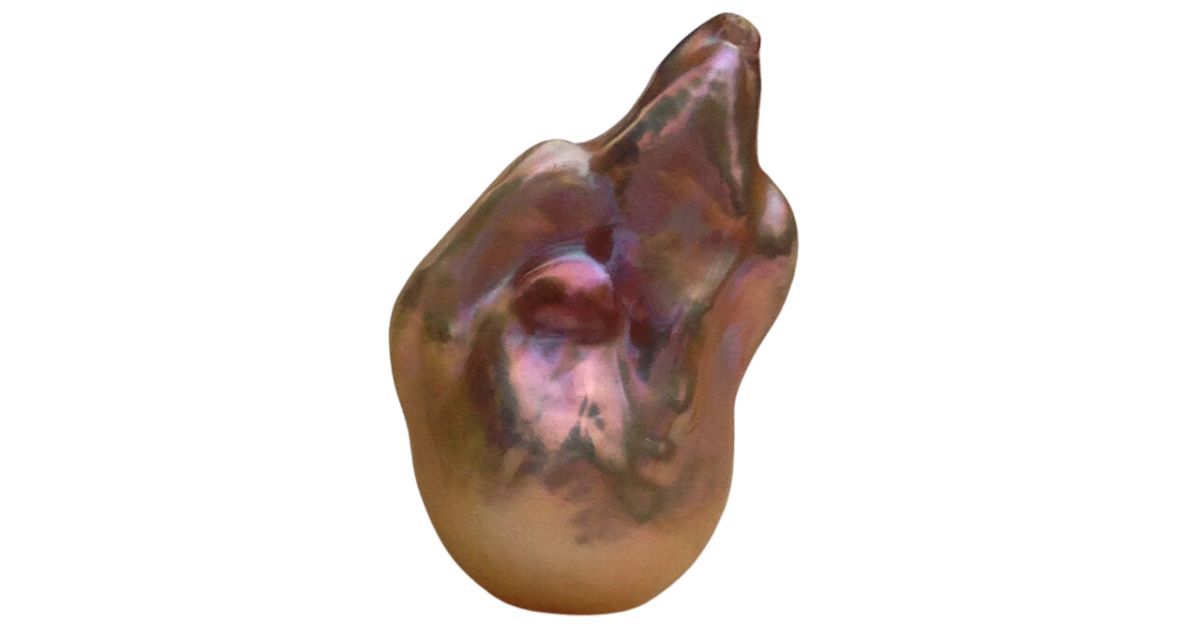Pearls are unique gems that come from the sea, and there are many different types of pearls. Akoya pearls, South Sea pearls, and Keshi pearls are just a few examples of the variety available.
Each type of pearl has its own special look and feel, making them all special in their own way. For example, mabe pearls have a distinctive style that sets them apart from others.
It’s exciting to learn about how each pearl is formed and where it comes from. Understanding these gems can help us appreciate their beauty even more.
The 13 Different Types Of Pearls And What They Look Like
Pearls are fascinating gems with a variety of shapes, sizes, and colors. The four major types of pearls are Akoya pearls, South Sea pearls, Tahitian pearls, and freshwater pearls, each with its own unique appearance.
In addition to these four, there are other interesting types of pearls that may fall under one of these categories. These gems show the incredible variety the ocean has to offer, with each type bringing its own special beauty to the world.
Akoya Pearls
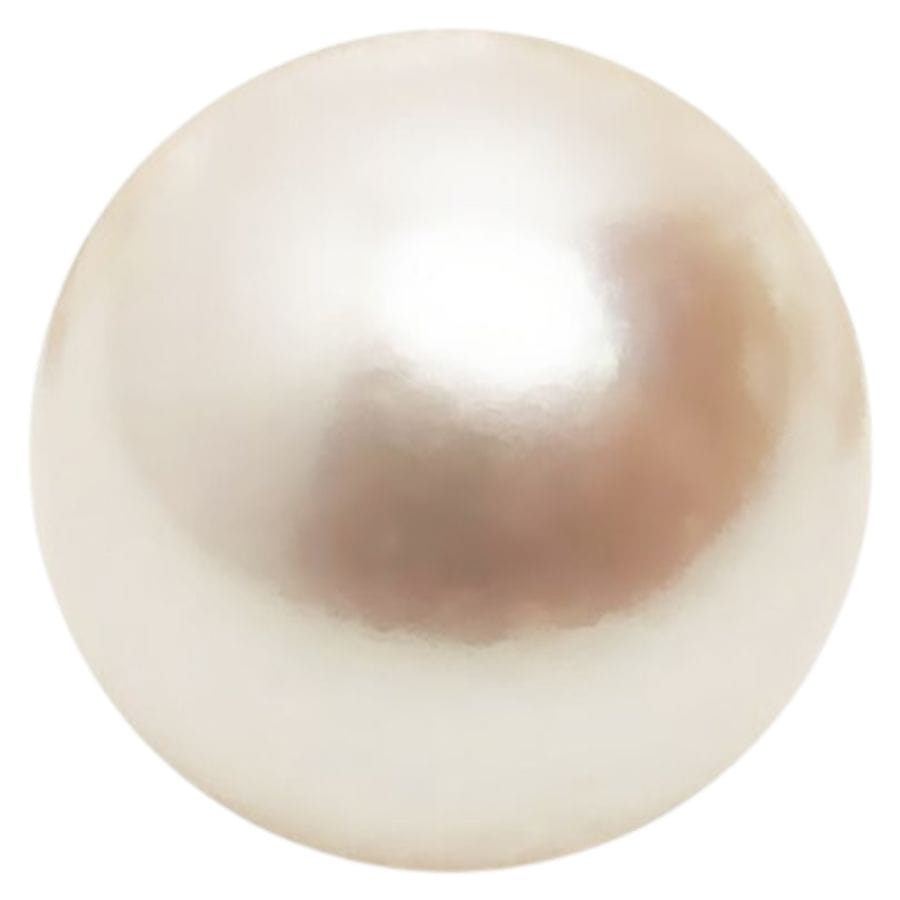
Akoya pearls are a type of pearl that are known for their luster and round shape. They are one of the different types of pearls people can find and admire.
These pearls typically have a white or cream color, but they can also have hints of pink or silver. The surface of Akoya pearls is smooth and shiny, reflecting light beautifully.
One of the most notable features of Akoya pearls is their size, which is generally smaller compared to other types. This small size makes them a subtle yet elegant option for all kinds of looks.
Where you can find Akoya pearls
Akoya pearls are primarily found in the waters off Japan and China, where the conditions are just right for pearl oysters. These regions are famous for cultivating Akoya pearls, using techniques passed down for generations.
DON'T MISS OUT ON ANY GREAT FINDS!
While you're out searching you're going to find A LOT of other interesting rocks and minerals along the way. The last thing you want to do is toss out something really interesting or valuable. It can be easy to misidentify things without a little guidance.
You absolutely need a good reference guide in order to understand what you're looking at!
We've put together a fantastic field guide that makes identifying 140 of the most interesting and valuable rocks and minerals you will find REALLY EASY. It's simple to use, really durable, and will allow you to identify just about any rock and mineral you come across. Make sure you bring it along on your hunt!
Now, back to the identification specifics:
Tahitian Pearls
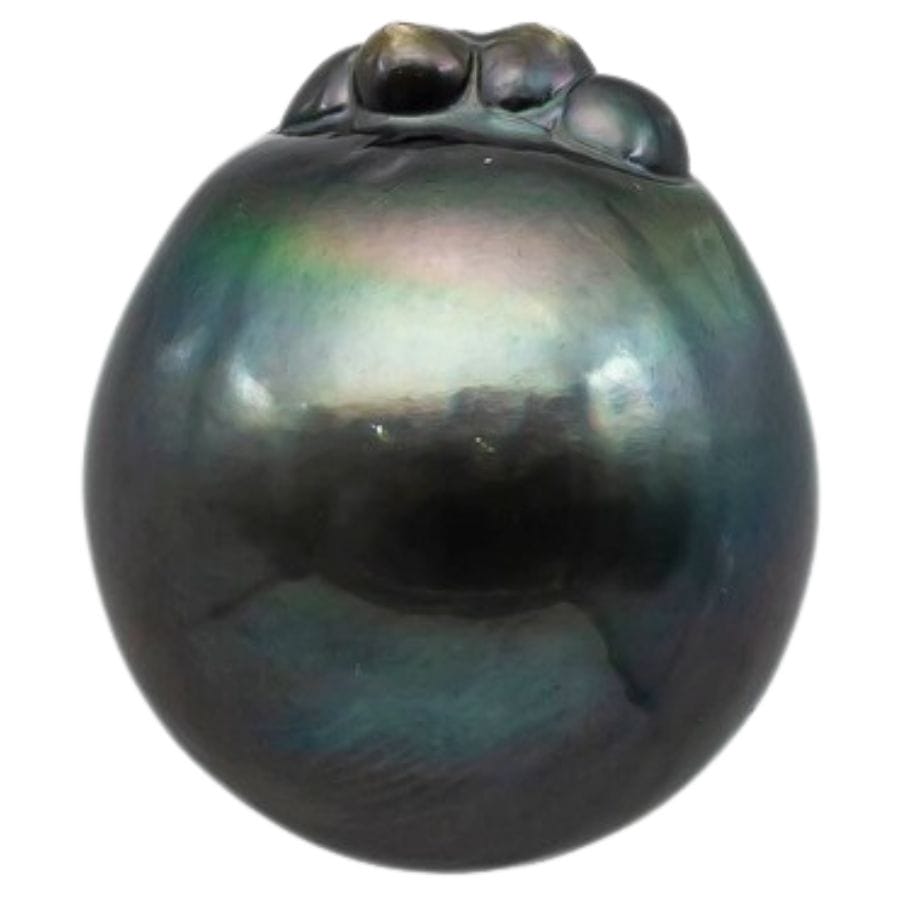
Tahitian pearls are known for their dark, exotic colors that range from black to green, blue, and purple. Unlike other pearls, their dark hues provide a captivating and mysterious allure.
Each Tahitian pearl has a unique luster that gives off a metallic sheen, making them stand out with a brilliant glow. Their surface is smooth and reflects light in a way that highlights their deep, rich colors.
Although they vary in size, Tahitian pearls are generally larger, adding to their dramatic appearance. Their bold size coupled with their distinctive color makes them a favorite for those seeking a statement piece.
Where you can find Tahitian pearls
Tahitian pearls are primarily harvested in the lagoons and atolls of French Polynesia, particularly around Tahiti. This region is the most famous for producing these unique and darkly colored pearls.
South Sea Pearls
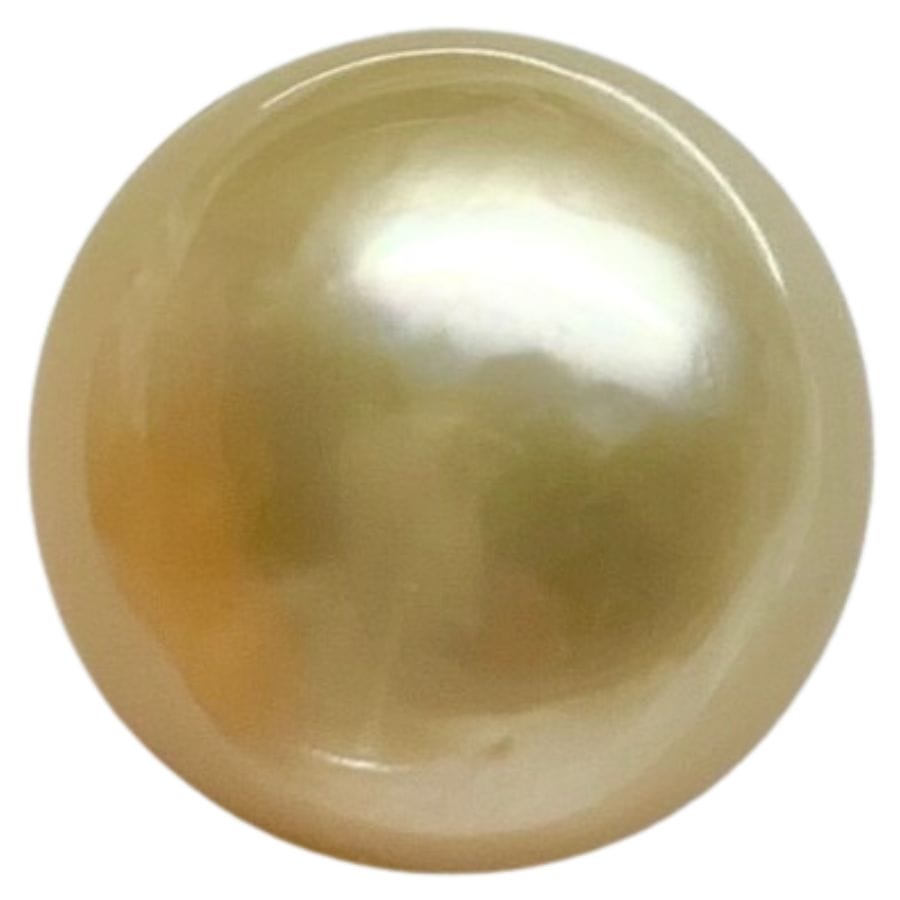
South Sea pearls are known for their impressive size and beautiful, satin-like luster. They come in a range of colors, from white to gold, each with a soft, glowing sheen that’s truly captivating.
These pearls are often round or near-round, with a thick, creamy nacre that gives them a rich, luxurious appearance. Their smoothness and size make them stand out as some of the largest pearls you can find.
Despite their size, South Sea pearls have a subtle elegance due to their delicate colors and gentle luster. This makes them a sophisticated choice for anyone looking for something both grand and graceful.
The monetary value of pearls varies widely, depending on their type, size, color, and shape, but it’s the rarity and quality that often determine what pearls are worth.
Where you can find South Sea pearls
South Sea pearls are typically found in the warm, salty waters off the coasts of Australia, Indonesia, and the Philippines. These regions are renowned for their large oysters that produce the equally large and beautiful South Sea pearls.
Freshwater Pearls
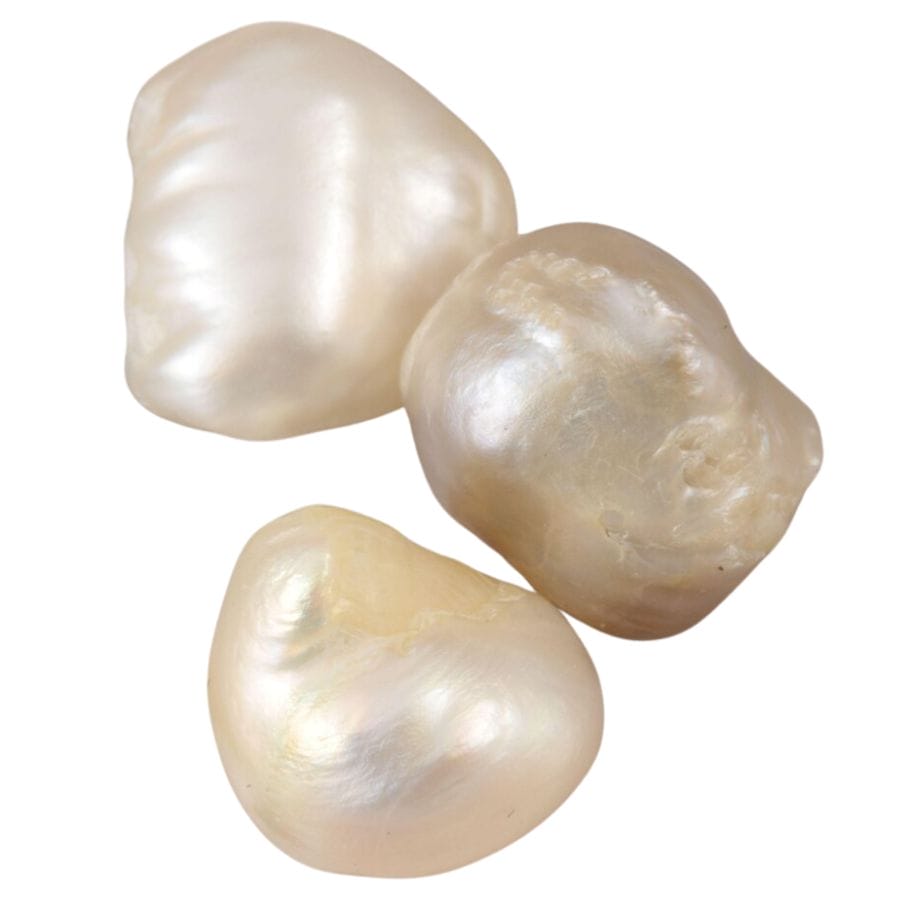
Freshwater pearls are unique because they come from mussels in rivers and lakes, not from the sea. They have a wide range of shapes and sizes, often less round and more varied than their saltwater cousins.
These pearls can be found in a rainbow of natural colors, from classic white to pink, peach, and even lavender. The colors are soft and subtle, giving freshwater pearls a gentle beauty that’s quite distinct.
The surface of a freshwater pearl has a soft luster, which gives it a warm, almost glowing appearance. They’re often not as perfectly smooth as other types of pearls, but this gives them a charming character all their own.
Where you can find freshwater pearls
Freshwater pearls are mostly cultivated in ponds, lakes, and rivers in China, which is the largest producer in the world. They are also found in smaller quantities in the United States, particularly in the Mississippi River.
If you want to know more about finding rocks, gems, and minerals in your area, check out our guide on where to go rockhounding. It can provide great tips and locations that you can start with.
Seed Pearls
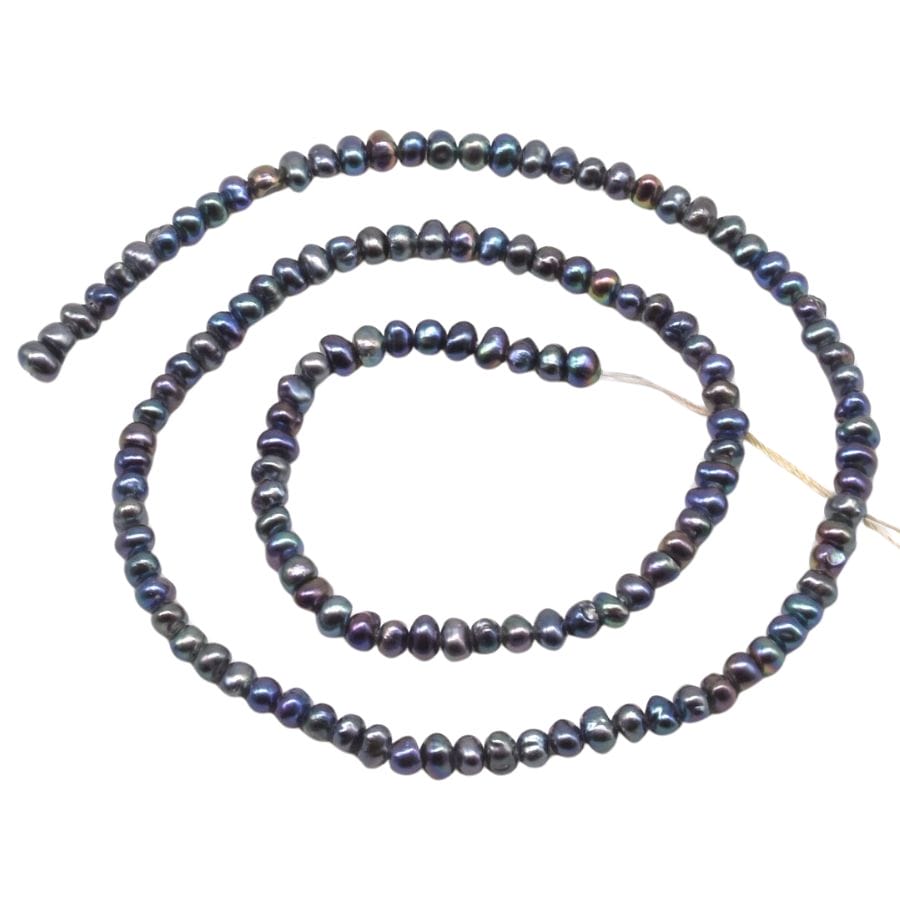
Seed pearls are tiny pearls that are often no larger than a couple of millimeters in diameter. They are known for their small size, making them look like a seed, hence the name.
Despite their size, seed pearls have a beautiful luster and can be found in a variety of colors, much like their larger counterparts. They are typically round or near-round and have a smooth, shiny surface that catches the light.
Due to their diminutive size, seed pearls are often used in clusters in various decorative ways.
Where you can find seed pearls
Seed pearls are often harvested from freshwater mussels and can be found in rivers and lakes across Asia, especially in China. They are also sometimes found in saltwater oysters in regions like Japan and Indonesia.
Keshi Pearls
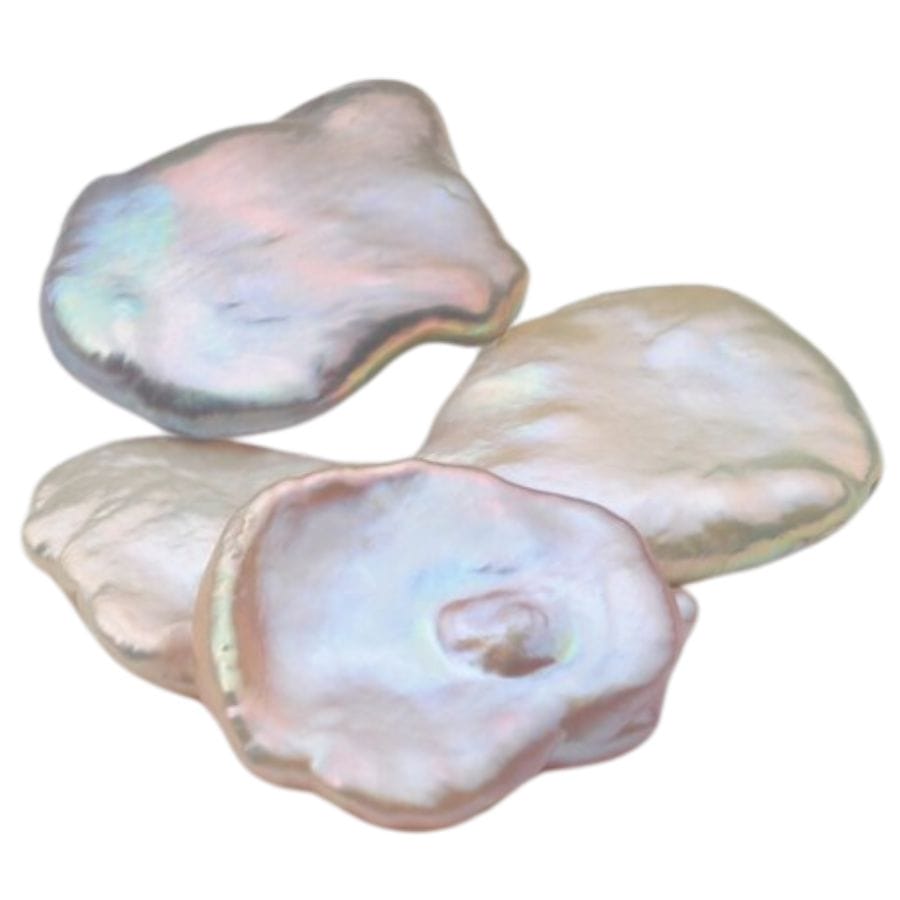
Keshi pearls are known for their unique shapes and lustrous surface, making them stand out from other pearl types. They are formed as a byproduct of pearl cultivation, but are entirely natural in their formation.
Unlike traditional pearls, Keshi pearls don’t have a nucleus inside; they’re composed entirely of nacre, which is the same material that makes pearls shiny and iridescent.
This gives Keshi pearls an especially bright and shiny luster, with a wide array of shapes and sizes.
Their irregular shapes range from flat and baroque to round, making each Keshi pearl distinct. The variety in their forms means that Keshi pearls add an element of unpredictability and individuality to any collection or piece they adorn.
Where you can find Keshi pearls
Keshi pearls are found in pearl oyster farms, as they are often byproducts of the pearl culturing process. These unique pearls are mainly harvested in areas like Japan, Australia, Indonesia, and the Philippines, where pearl farming is prevalent.
Biwa Pearls
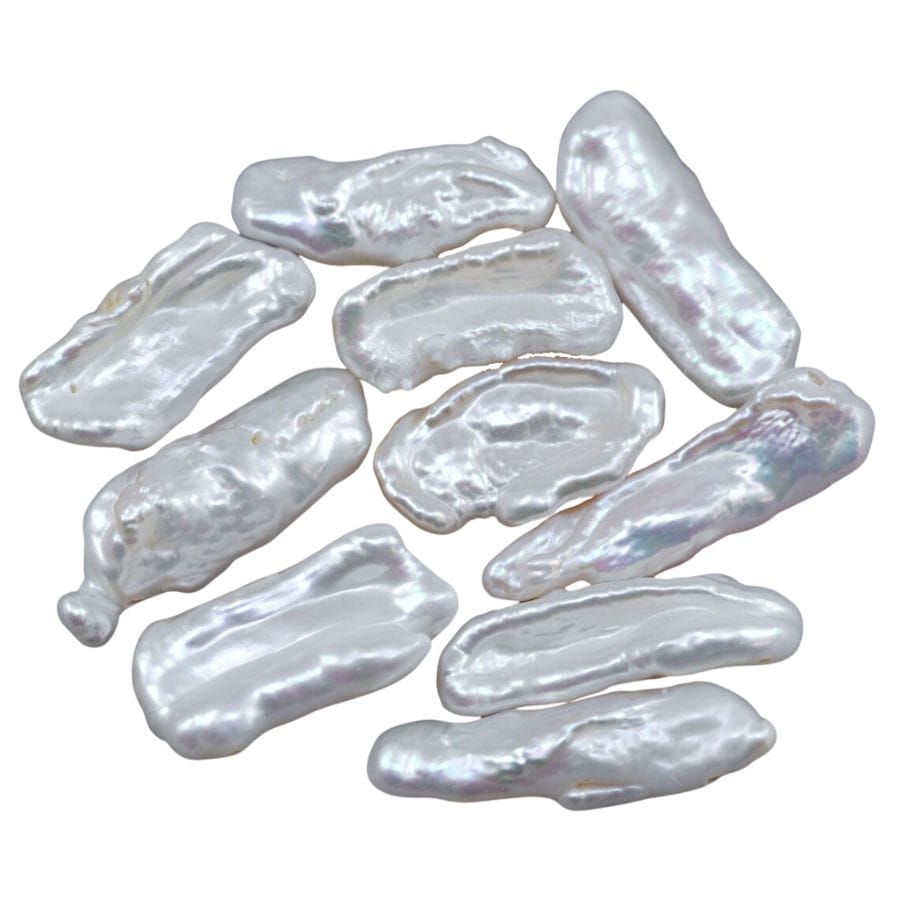
Biwa pearls are a type of freshwater pearl that are known for their elongated, often irregular shapes. They are one of the many fascinating pearl types, celebrated for their lustrous sheen and variety of shapes.
Unlike the traditional round pearls, Biwa pearls are more likely to be found in unique and free-form shapes. Their surface is smooth with a beautiful luster, reflecting light in a way that highlights their unique forms.
Each Biwa pearl has a soft and subtle color, typically ranging from white to cream, with some exhibiting lovely overtones. Their distinct shapes and gentle colors make them a popular choice for those looking for something both unique and elegant.
Where you can find Biwa pearls
Biwa pearls are traditionally cultured in Lake Biwa, Japan, which was once renowned for producing these distinctive pearls.
However, due to pollution and overharvesting, the production has largely shifted to other freshwater sources in China and Japan, continuing the legacy of Biwa pearl cultivation.
Mabe Pearls
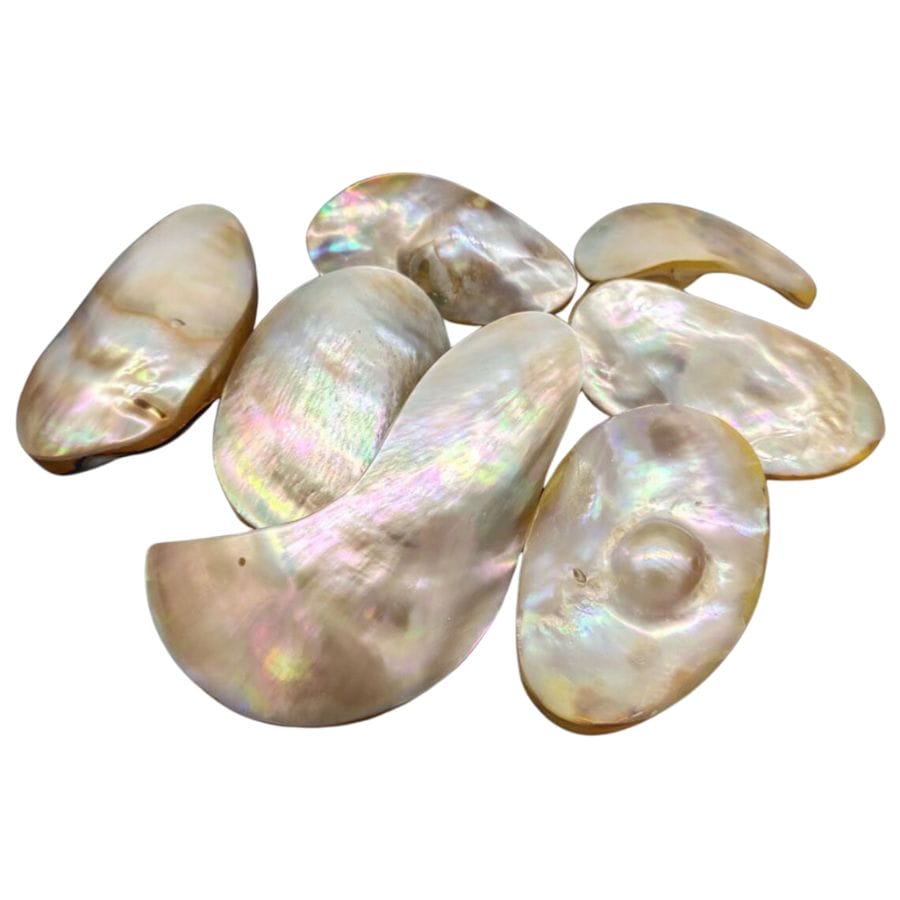
Mabe pearls are quite distinct from other types of pearls because of their unique, semi-spherical shape. Known as “blister pearls,” these are cultivated on the inside shells of an oyster rather than within its body.
The surface of Mabe pearls is often very lustrous and shiny, reflecting a rainbow of colors from their convex top. They come in a variety of colors, from white and pink to blue and green, each with its own subtle glow and charm.
Despite their unique cultivation process, Mabe pearls maintain the smooth, iridescent quality characteristic of more traditional pearls. Their large, rounded shape makes them a popular choice for statement pieces, adding a touch of elegance and interest.
Where you can Mabe pearls
Mabe pearls are primarily cultivated in the warm sea waters of Japan, Indonesia, and Australia. These regions are renowned for their oyster farming techniques that have been perfected to produce beautiful Mabe pearls.
Baroque Pearls
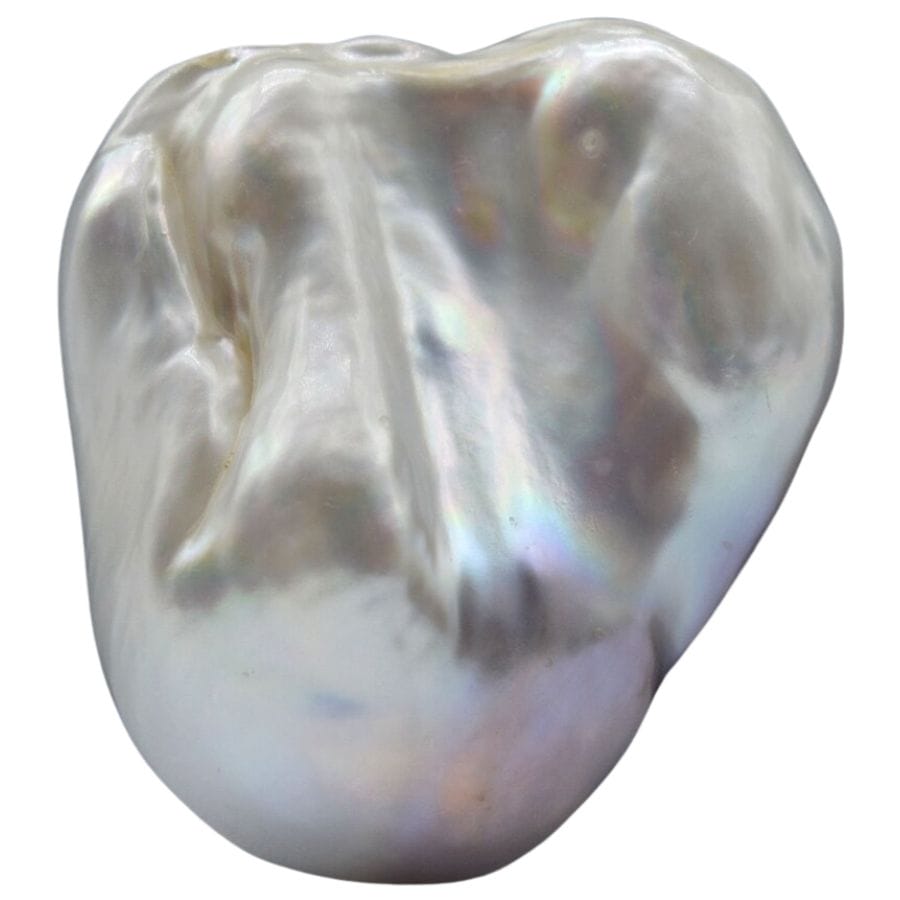
Baroque pearls are known for their unique and irregular shapes, setting them apart from the traditional round pearls. They challenge the standard of what pearls look like, with each one having its own distinct form and character.
These pearls can vary greatly in shape and size, with some being long and thin, while others are short and chunky. Their surfaces are often uneven, with bumps and ridges that catch the light in fascinating ways.
Despite their irregularity, baroque pearls have a beautiful luster and come in a wide range of colors, from classic white to soft pinks and deep purples.
Their unique and unusual appearance makes them a favorite for those looking for something truly unique.
Where you can find baroque pearls
Baroque pearls are found in both freshwater and saltwater environments, produced by oysters and mussels worldwide. They are especially prevalent in regions known for pearl cultivation like China, Japan, and the South Pacific.
Conch Pearls
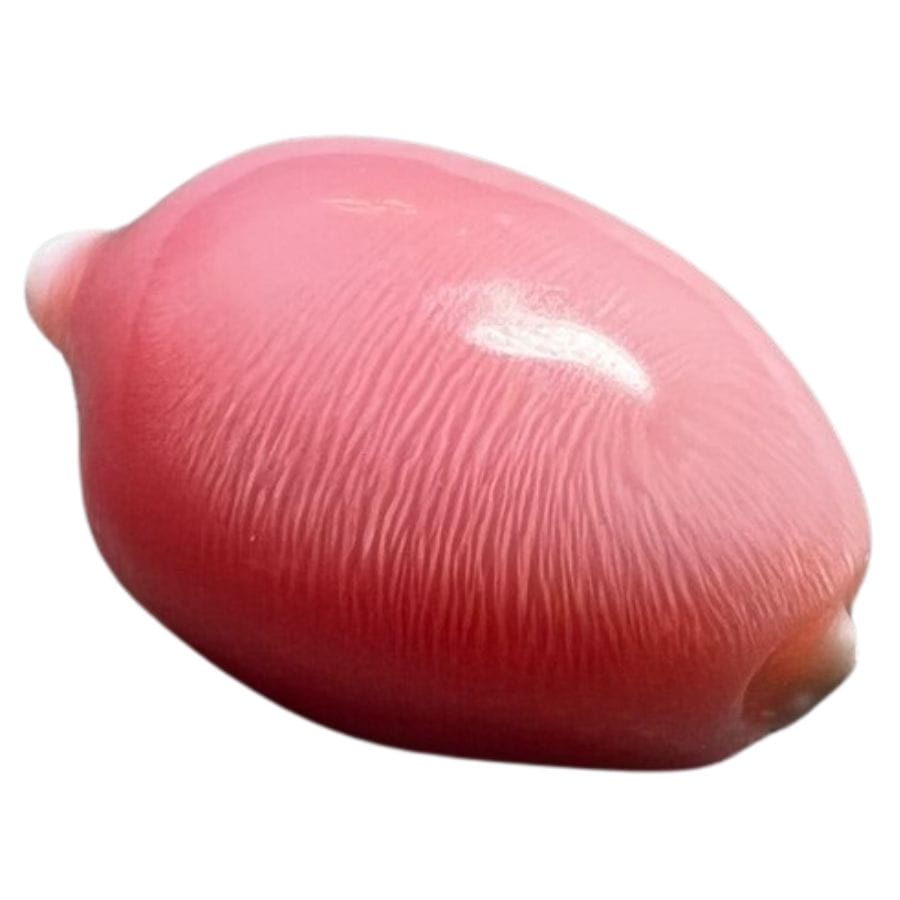
Conch pearls are not your typical pearls, as they come from the queen conch mollusk and are not actually made of nacre. They are known for their beautiful and rare colors, typically ranging from soft pinks to deep corals.
What makes conch pearls particularly special is their flame structure, a pattern of shimmering light that resembles a flame, giving them an extraordinary glow. This unique characteristic, along with their porcelain-like finish, sets them apart from other pearls.
Unlike many pearls, conch pearls cannot be cultivated and are only found naturally, making each one a rare find. Their array of warm hues and the unique flame pattern make conch pearls a coveted gem for collectors and admirers alike.
Where you can find conch pearls
Conch pearls are rare and are primarily found in the Caribbean Sea, especially within the queen conch mollusk. These beautiful pearls are natural and not cultured, making them a rare find in the warm waters where the queen conch lives.
Rice Pearls
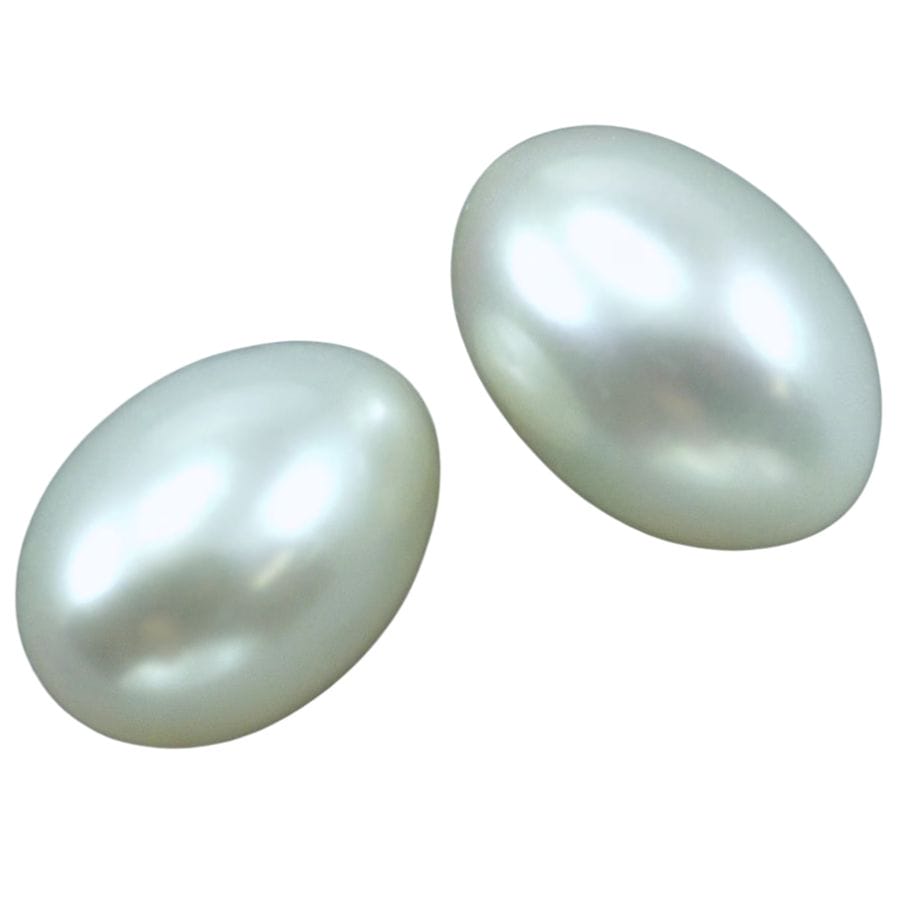
Rice pearls get their name from their unique shape, which resembles a grain of rice. They are typically small and elongated, with a length much greater than their width.
Their surface is often less smooth than round pearls, with a texture that can vary from pearl to pearl. Despite this, they still have a gentle luster that catches the light in a soft, subtle way.
Rice pearls come in a variety of colors, from white and cream to shades of pink and lavender. Their small size and interesting shape make them a popular choice for stringing together in necklaces and bracelets, providing a delicate and intricate look.
Where you can find rice pearls
Blister pearls are typically found within oysters and mussels in both freshwater and saltwater environments, and they form attached to the inner shell of these mollusks.
These pearls are common in areas engaged in pearl cultivation, especially in regions like Southeast Asia and the Pacific Islands.
If you’re interested in exploring more about gems and how to find them, our guide on finding gems near you can provide great insights and tips. This guide is a useful resource for anyone curious about collecting gems.
Coin Pearls
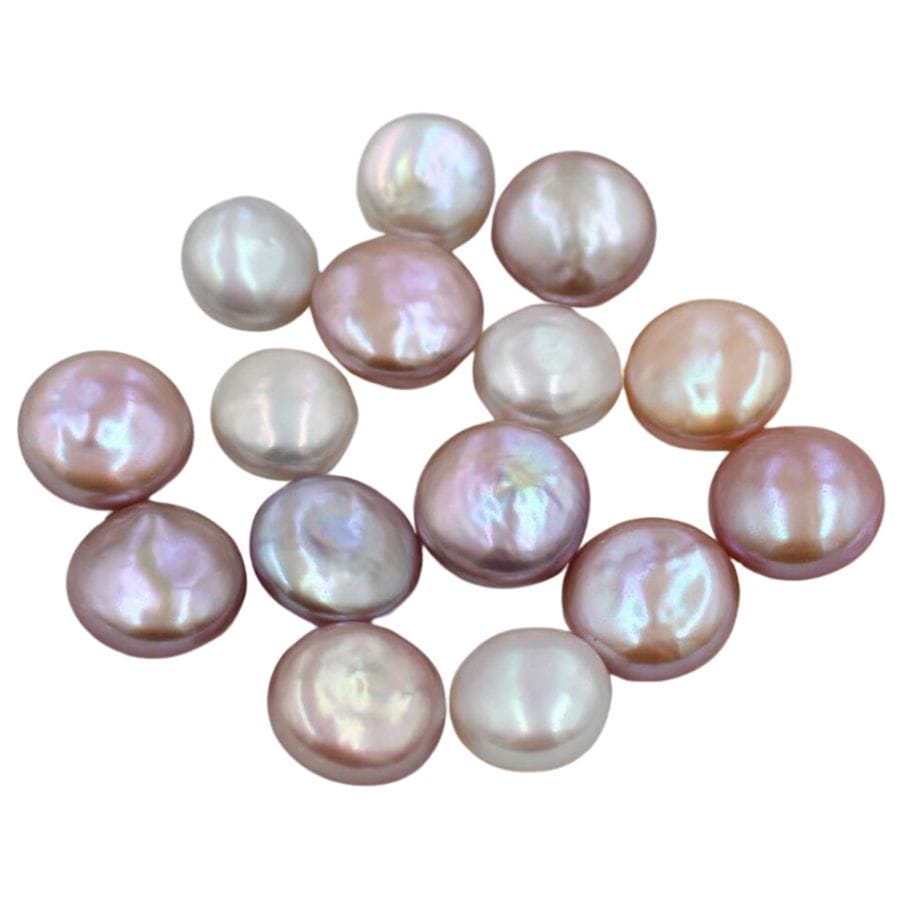
Coin pearls are flat and round, much like the shape of a coin, which is where they get their name. They have a broad, flat surface that showcases their luster and color beautifully.
These pearls are often larger in diameter, giving a bold and distinctive look. The surface is smooth and shiny, reflecting light in a way that emphasizes their round, flat shape.
Coin pearls come in a variety of colors, from classic white to soft pink and even black. Their unique shape and size make them a popular choice for those looking for a modern twist on the traditional pearl.
Where you can find coin pearls
Coin pearls are primarily cultivated in freshwater farms, with China being the largest producer of these unique pearls.
They are also found in various other countries that specialize in freshwater pearl cultivation.
Melo Melo Pearls
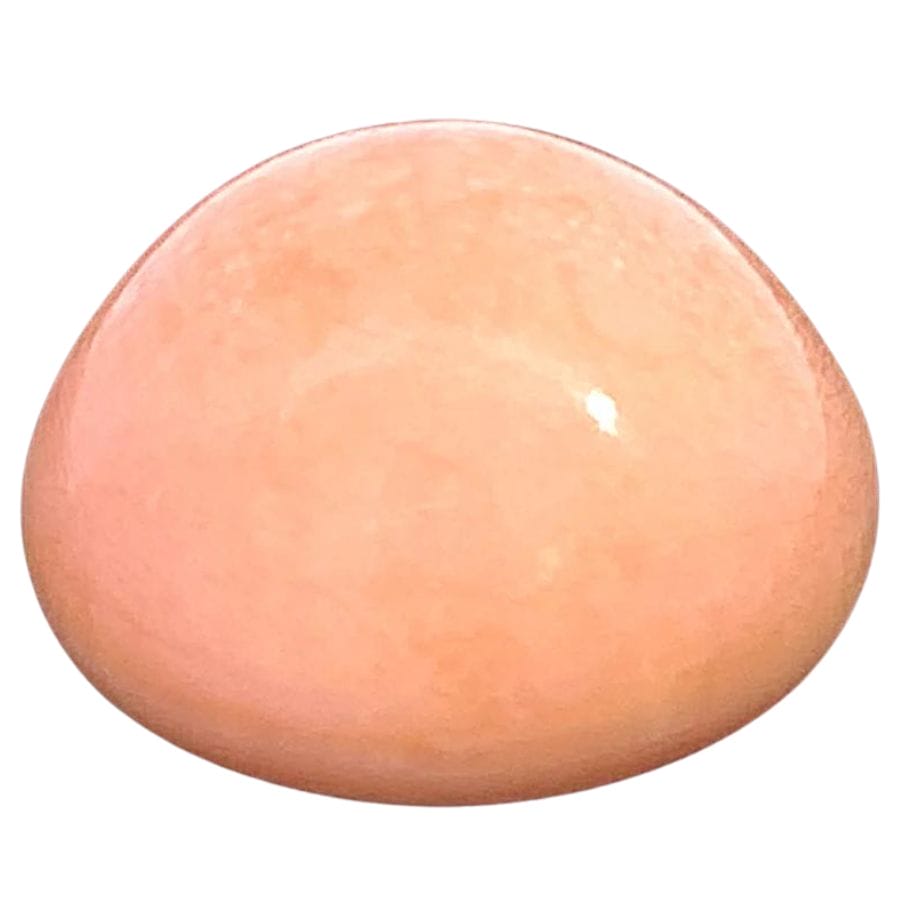
Melo melo pearls are unique gems that come from the melo melo sea snail, making them quite rare and different from typical oysters or mussel pearls.
They are known for their large size and intense, orange to tan color, which gives them a warm, glowing appearance.
Unlike other pearls, melo melo pearls do not have the same lustrous sheen; instead, they possess a soft, porcelain-like quality. Their surface is smooth and often displays an interesting pattern of swirls or flames, adding to their uniqueness.
Melo melo pearls vary in shape, but they are typically round or oval. The combination of their size, color, and distinctive patterns makes them a sought-after item for those who appreciate the beauty and rarity of natural gems.
Where you can find melo melo pearls
Melo melo pearls are sourced from the melo melo sea snail, which is primarily found in the South China Sea and the Andaman Sea.

